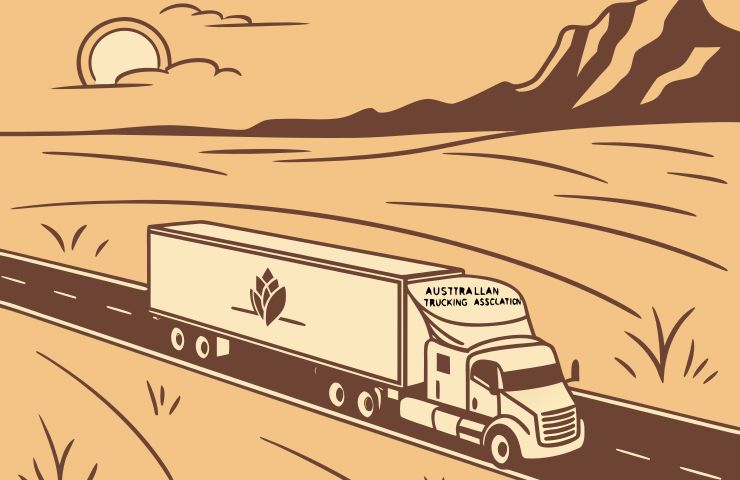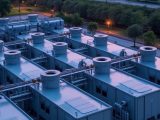
ATA Endorses Hydrogen Trucking: Driving Australian Freight to Net Zero
October 21, 2025Picture this: busy freight depots in Sydney’s western suburbs, terminals at Melbourne’s Port of Hastings and even those endless Outback highways—once choked with diesel fumes, now eerily quiet thanks to sleek, whisper-quiet hydrogen fuel cell trucks. Some 26 million Australians count on a logistics network that weaves through cities, country towns and remote mines, making road freight the economy’s lifeblood—and one of the transport sector’s biggest polluters. Sure, swapping out diesels brings its headaches: fueling in the bush, upskilling drivers and crews, plus the hefty price tag of shiny new rigs. That’s why the Australian Trucking Association backing hydrogen is a game-changer—it’s a massive win for hydrogen trucking and the push for decarbonization, proving we can haul freight green without missing a beat.
ATA’s Hydrogen Push: A Big Splash in Sustainable Freight
When you’re the voice of 50,000 businesses and 200,000 workers, you’ve got clout. The Australian Trucking Association first rocked up after the 1989 Grafton tragedy, driving a safety-first shake-up that still shapes the industry today. Since then, it’s broadened its brief—boosting productivity, professionalism and now, environmental stewardship. By formally endorsing hydrogen, the ATA is sending a clear message: zero-emission freight isn’t some optional extra, it’s non-negotiable. Weaving hydrogen into its advocacy, it’s connecting industry growth to federal net zero emissions goals. And it’s snapping at the heels of OEMs and energy developers, demanding they deliver scalable, cost-effective solutions—tossing out any lingering doubts about infrastructure or budget.
Why Hydrogen? The Secret Sauce for Zero-Emission Trucks
Think about it: hydrogen fuel cell trucks bring the performance and eco-credentials that battery electrics can struggle to match on long hauls. Here’s the magic: hydrogen meets oxygen in a fuel cell stack, sparking electricity and only producing water vapour. That juice powers high-torque motors, hauling 40-tonne loads over the Nullarbor or tackling mountain climbs with ease. Refilling the tank? Minutes, not hours—perfect when schedules are tight. And if you produce that hydrogen via renewables-powered electrolysis, you’re looking at a near-zero carbon chain from start to finish. It’s why realistic, heavy-duty hydrogen trucking ticks all the boxes: range, refueling speed and green credentials.
Historical Context: From Safety Reforms to Climate Action
The ATA was born from tragedy—after a 1989 crash in Grafton that took 20 lives, it championed tougher vehicle standards, driver training and fatigue rules. As the years rolled on, its agenda widened to cover everything from productivity benchmarks to tech adoption and regulatory reform. But in the last five years, sustainability has taken centre stage. The ATA worked the halls of power to reshape fuel taxes—pushing for an energy-equivalent model that welcomes alternative fuels like hydrogen. Through workshops, white papers and pilot trials, they laid the tracks. Now, hydrogen is front and centre, the fruit of decades of policy engagement and a commitment to driving real change.
Policy Landscape: Driving Change with Incentives
Australia has both a National Hydrogen Strategy and a Future Fuels Strategy, but heavy transport often lags behind policies targeting cars and stationary storage. The ATA is closing that gap, lobbying for hydrogen-specific incentives like refundable tax credits, grants for new vehicle purchases and a clear build-out plan for refueling stations along main freight arteries. Thanks to their push, pilot funding for state-based hydrogen hubs is on the table, even if the fine print’s still under wraps. What counts is the ATA is steering the conversation—urging consistent standards, crystal-clear safety protocols and a roadmap to shift fleets from demos to full-scale deployment. That policy certainty is the green light investors and operators have been waiting for.
Collateral Benefits and Challenges
Switching to hydrogen isn’t just about slashing carbon—it wipes out particulates and NOx, giving cities like Brisbane and Perth cleaner air. It also ties into plans for renewable energy zones: surplus solar and wind juice can feed electrolysers, sparking growth in regional areas. A local hydrogen supply chain could even open new export markets. But it’s not all smooth sailing. Zero-emission trucks cost more upfront than diesels, and a single hydrogen station can set you back millions. Fleets need training, emergency-response plans and a phased approach to juggle diesel and hydrogen vehicles. Then there’s regulatory uncertainty, which the ATA and government are hashing out—covering liability, safety standards and cross-border rules. It’s a big puzzle, but nailing it could supercharge Australia’s energy and logistics resilience.
Built for the Future: What’s Next?
Under the ATA’s watch, its General Council, Board of Management and Industry Technical Council are cranking out initiatives. They’re drafting standards for on-site hydrogen storage with Australian Standards, certifying prototype trucks alongside OEMs, and teaming up with energy players to map out a network of refueling stations on east–west corridors. Plus, training modules for drivers and technicians are in the pipeline. Over the next year, expect an industry roadmap—pinning down targets for vehicle rollouts, infrastructure milestones and emission cuts. While adoption numbers are still in pilot mode and not publicly verified, you can feel the momentum humming through industry and government circles.
Bottom line: by championing hydrogen, Australia’s trucking industry isn’t just shooting for net zero emissions—it’s building a more resilient, innovative and competitive future. With the ATA at the helm, the hydrogen revolution on our highways is ready to roll.



 With over 15 years of reporting hydrogen news, we are your premier source for the latest updates and insights in hydrogen and renewable energy.
With over 15 years of reporting hydrogen news, we are your premier source for the latest updates and insights in hydrogen and renewable energy.